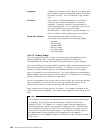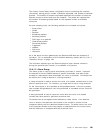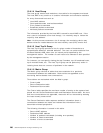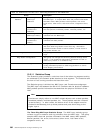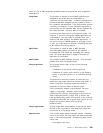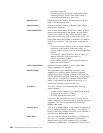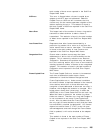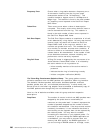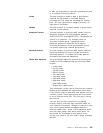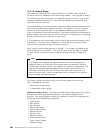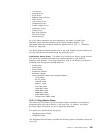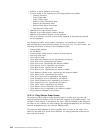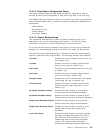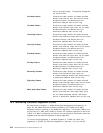Frequency Error Occurs when a ring station detects a frequency error.
A new station inserting into the ring can cause
downstream stations to be ″off frequency″. This
condition seems to happen more on 16 Mbps than 4
Mbps rings. This statistic is found in the total number
of Frequency errors reported in the Soft Error Report
MAC frame.
Token Error Token errors occur when a token is destroyed or
corrupted. This usually occurs when devices insert or
remove themselves from the ring. This statistic is
found in the total number of token errors reported in
the Soft Error Report MAC frame.
Soft Error Report The Soft Error Report contains a compilation of all soft
errors detected by a ring station. At every two-second
interval, each ring station will transmit a Soft Error
Report MAC frame to the ring error monitor if the
counters are greater than zero. This enables the ring
error monitor to maintain accurate error statistics. A
soft error refers to an intermittent network error that
causes data to be retransmitted. If the number of soft
errors becomes excessive, network reliability and
performance can be seriously impacted.
Ring Poll Event A Ring Poll event is triggered by the occurrence of an
Active Monitor Present MAC frame
. It is initiated by
the active monitor to all ring stations to:
•
Inform standby monitors of the active monitor′s
presence
•
Indicate that the ring is functioning correctly
•
Initiate a neighbor notification (NAUN)
The Token-Ring Promiscuous Statistics Group:
This group gathers current
utilization statistics from non-MAC packets on a particular token-ring interface.
The statistics like data packets, data octets, broadcast packets, multicast
packets, packet size, etc., are collected promiscuously. In other words, the
device driver for the token-ring adapter must be enabled to deliberately copy all
non-MAC packets even though they are not addressed to it.
Here is a list of statistics available under this group and their respective
descriptions:
Drop Event The number of events in which non-MAC packets were
dropped by the probe due to unavailability of
resources on the probe itself. It doesn′t represent the
number of packets dropped but the number of times
this condition was detected. If the drop events counter
constantly increments, it is an indication that there is
more activity on the segment than can be captured by
the network probe. You may want to consider
increasing the resources on your network probe. For
instance, if you are running the RMON application on
a workstation, you may want to allocate more real
memory and disk space to the RMON application. If
you are running an RMON subset on a bridge, router,
206 8260 Multiprotocol Intelligent Switching Hub



